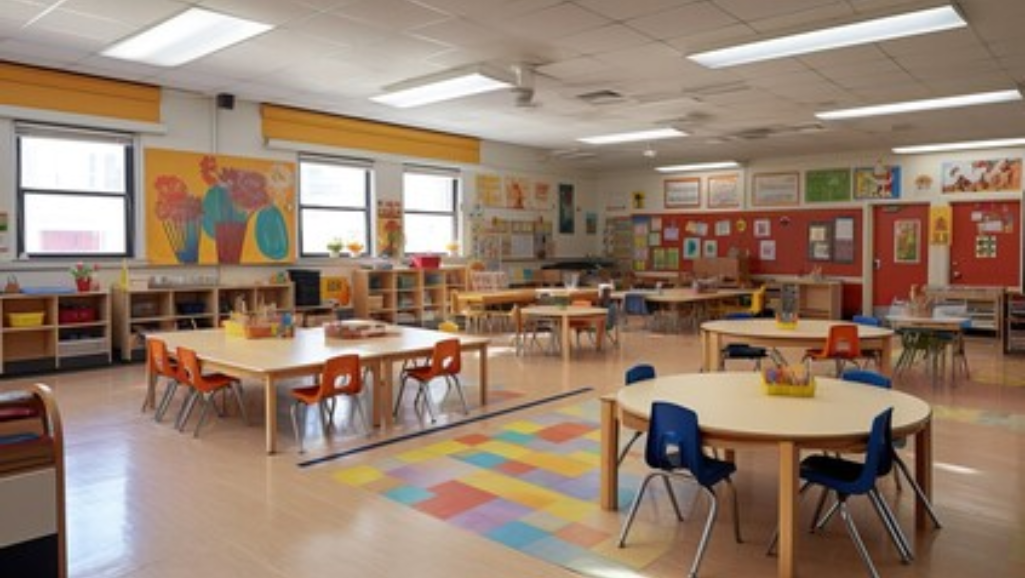Are you wondering which classroom layout is the most efficient for your students? Look no further! In this article, we will explore various classroom layouts and analyze their effectiveness. From the traditional classroom setup to the collaborative grouping layout, the flexible seating arrangement, the technology-integrated design, and the Montessori-inspired approach, we will provide practical insights to help you create an optimized learning environment. Get ready to revolutionize your classroom and enhance your students’ learning experience!
Traditional Classroom Layout
The traditional classroom layout encourages passive learning and limits student engagement. In a traditional classroom, the design typically consists of rows of desks facing the front of the room, where the teacher stands and delivers instruction. This layout promotes a teacher-centered approach, where the focus is on the teacher as the sole source of knowledge and students as passive recipients.
The traditional design fails to consider the diverse learning needs of students. It does not facilitate collaboration or interaction among students. Instead, it fosters a sense of isolation and restricts movement. Students are confined to their desks, inhibiting their ability to actively engage in the learning process.
Furthermore, the traditional classroom design does not support the use of technology effectively. With limited access to power outlets and lack of space for devices, students are hindered in their ability to utilize digital tools for research, collaboration, and creativity.
In contrast, modern classroom design takes into account the changing needs of students and the evolving nature of education. It embraces flexibility and adaptability, allowing for various learning activities and group work. Modern classrooms often feature flexible furniture, such as movable desks and chairs, that can be rearranged to accommodate different teaching and learning styles. This layout encourages active participation and collaboration among students, fostering a more engaging and inclusive learning environment.
Collaborative Grouping Layout
To promote active collaboration among students, consider adopting a collaborative grouping layout in your classroom. This arrangement encourages students to work together, fostering teamwork and enhancing their learning experience. Here are three benefits of using a collaborative grouping layout:
- Increased engagement: Group work allows students to actively participate in their learning process. By working together, they can exchange ideas, discuss concepts, and solve problems collectively. This increased engagement can lead to a deeper understanding of the material and improved retention of knowledge.
- Enhanced communication skills: Collaborative grouping layouts provide opportunities for students to practice and develop their communication skills. They learn how to express their thoughts, listen to others’ perspectives, and collaborate effectively. These skills are essential for future success in both academic and professional settings.
- Diverse perspectives: When students work in groups, they bring their unique backgrounds, experiences, and ideas to the table. This diversity of perspectives enriches discussions and allows students to see different viewpoints. It promotes critical thinking and helps students develop a broader understanding of the subject matter.
Incorporating a collaborative grouping layout in your classroom can create a dynamic and interactive learning environment. It encourages active participation, fosters communication skills, and exposes students to diverse perspectives. By embracing group work, you can maximize the benefits of collaboration and create a more efficient classroom arrangement.
Flexible Seating Layout
Consider incorporating flexible seating into your classroom layout for a more versatile and student-centered learning environment. Flexible seating offers alternative seating options that can enhance student engagement and improve learning outcomes. By providing students with a variety of seating choices, such as bean bags, floor cushions, standing desks, or wobble stools, you can cater to their individual preferences and needs.
One of the key benefits of flexible seating is that it promotes movement and active learning. Students are not confined to traditional desks and chairs, allowing them to change positions and find the most comfortable and productive seating arrangement for themselves. This freedom of movement can increase focus and concentration, as well as reduce restlessness and behavioral issues.
Flexible seating also encourages collaboration and communication among students. With the ability to easily rearrange the classroom setup, students can work in small groups or pairs, fostering teamwork and cooperation. This layout also promotes flexibility in lesson delivery, as teachers can easily transition between whole-group instruction and small-group activities.
Technology-Integrated Layout
For an efficient classroom layout, incorporate technology seamlessly into your teaching environment. Integrating technology into your classroom can create innovative learning spaces and provide numerous benefits for both teachers and students. Here are three key advantages of technology integration:
- Enhanced engagement: Technology allows for interactive and immersive learning experiences. With tools such as interactive whiteboards, tablets, and educational apps, students can actively participate in lessons and engage with the material in a more meaningful way. This increased engagement can lead to better retention and understanding of the content.
- Personalized learning: Technology enables teachers to tailor instruction to individual student needs. With online resources and adaptive learning platforms, students can receive personalized feedback and access to additional resources based on their specific learning styles and abilities. This personalized approach can help students progress at their own pace and achieve greater academic success.
- Collaboration and communication: Technology facilitates collaboration among students and between teachers and students. With tools like online discussion boards, video conferencing, and collaborative documents, students can work together on projects, share ideas, and communicate effectively. This fosters teamwork, critical thinking, and communication skills that are essential for success in the digital age.
Montessori-inspired Layout
One key aspect of an efficient classroom layout is incorporating a Montessori-inspired design. A Montessori inspired learning environment focuses on creating a space that promotes independence, exploration, and hands-on learning. This layout encourages students to take ownership of their education and engage in self-directed activities.
One of the benefits of a Montessori-inspired layout is that it allows for individualized learning. The classroom is organized into different learning areas, such as language, math, and practical life. Each area is equipped with materials that are accessible to the students, allowing them to choose activities based on their interests and abilities. This promotes a sense of autonomy and encourages students to take responsibility for their own learning.
Another benefit of a Montessori-inspired layout is the emphasis on movement and collaboration. The classroom is designed to accommodate group work and movement, with open spaces and flexible seating arrangements. This encourages students to interact with their peers, share ideas, and collaborate on projects. It also allows for movement and physical activity, which has been shown to enhance cognitive function and improve focus and attention.



